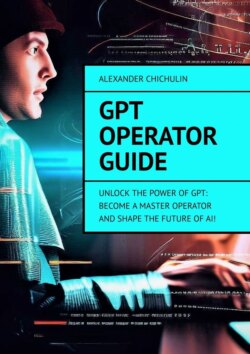Читать книгу GPT Operator Guide. Unlock the Power of GPT: Become a Master Operator and Shape the Future of AI! - - Страница 9
Introduction to GPT Operator
Familiarizing with GPT Models and Versions
ОглавлениеAs a GPT Operator, it’s important to familiarize yourself with the different GPT models and versions available. Understanding the characteristics, capabilities, and limitations of these models will help you make informed decisions when selecting and deploying the most appropriate GPT model for specific tasks. Here are key points to consider:
1. GPT Model Versions: GPT models are typically released in different versions, with each version representing an improvement or enhancement over the previous one. Stay updated with the latest versions to leverage new features, performance improvements, and bug fixes.
2. Model Size and Complexity: GPT models can vary in terms of size and complexity. Larger models tend to have more parameters and capture more fine-grained details but require more computational resources for training and deployment. Smaller models may be more suitable for resource-constrained environments but may sacrifice some performance.
3. Pre-Trained vs. Fine-Tuned Models: GPT models are often pre-trained on large-scale datasets to learn general language representations. However, fine-tuning allows models to adapt to specific tasks or domains. Understand the distinction between pre-trained and fine-tuned models and their implications for your use case.
4. Model Capacities and Tasks: GPT models can handle a wide range of natural language processing tasks, such as language generation, summarization, question answering, and translation. Familiarize yourself with the capabilities of different GPT models and their strengths in specific tasks.
5. Open-Source Implementations and Libraries: GPT models have been implemented and made available through open-source libraries, such as Hugging Face’s Transformers. Explore these libraries to access pre-trained GPT models, fine-tuning scripts, and tools for model deployment and management.
6. Research Papers and Documentation: Stay updated with research papers and documentation related to GPT models. Research papers often introduce novel architectures, training methodologies, and advancements in the field. Documentation provides insights into model usage, configuration, and fine-tuning guidelines.
7. Model Evaluation and Benchmarking: Evaluate and compare the performance of different GPT models using established evaluation metrics and benchmarks. This allows you to assess the model’s suitability for specific tasks and compare their strengths and weaknesses.
8. Community Forums and Discussions: Engage with the GPT community through forums, discussion groups, and online communities. These platforms provide opportunities to learn from experienced practitioners, share knowledge, ask questions, and stay informed about the latest developments in GPT models.
By familiarizing yourself with GPT models and versions, you can make informed decisions regarding model selection, fine-tuning strategies, and optimization techniques. This knowledge also helps in effectively communicating with data scientists, developers, and stakeholders involved in GPT projects, enabling collaborative decision-making and successful implementation of GPT systems.
